![Top Networking Interview Questions And Answers [Updated]](/img/3/top-networking-interview-questions-and-answers-updated.jpg)
Transcription
Top Networking Interview Questions and Answers [Updated]Hardware and networking engineers are the key part of any organization’s IT team. They areresponsible for implementing, maintaining, supporting, developing, and, in some cases,designing communication networks within an organization or between organizations. Their goalis to ensure the integrity of high availability network infrastructure to provide maximumperformance for their users.The networking Hardware Market is increasing at a faster speed with tangible growth ratesover the past few years and is expected that the market will grow remarkably in the anticipatedperiod i.e. 2020 to 2027.Companies looking for expert professionals who can handle their networking requirementsefficiently. There are a lot of opportunities for such professionals in the industry. If you want toboost your career, you should think of going for a certification course in networking,like CCNA or CompTIA. Various courses are depending on the level of expertise – beginner,intermediate, or advanced.In case you have interview opportunities for a role in this field, here are some of the probabletop Networking interview questions and answers that may be asked in a hardware andnetworking interview:Top Networking Interview Questions and AnswersQ1. What are the two types of transmission technology available?Ans. The two types of transmission technology are – Broadcast NetworksBroadcast networks is a group of electronic media such as radio stations, television stations orany other source used to generate the agreement to broadcast, to air, and other sources. In thisnetwork, messages are sent by a node which can be received by other nodes. Point-to-point Networks
It is a type of network that is used to connect two or more locations for private data services. Italso communicates with data services, voice, and internet together at the same point-to-pointnetwork.Q2. What is a ‘subnet’?Ans. A ‘subnet’ is a generic term for a section of an extensive network, usually separated by abridge or a router. It also works for the network’s broadcast domains, manages traffic flow, andhelps increasing network performance.Uses of the subnet in networking: Relieving network congestionReallocating IP addressesImproving network securityQ3. What is DNS?Ans. The Domain Name System (DNS) is a central part of the internet, providing a way to matchnames (a website you’re seeking) to numbers (the address for the website). Anythingconnected to the internet – laptops, tablets, mobile phones, and websites – has an InternetProtocol (IP) address made up of numbers.Q4. Explain ‘hidden shares’.Ans. A hidden or administrative share is a network share that is not visible when viewinganother computer’s shares.Q5. How many layers are there in the OSI model? Name themAns. There are seven layers – physical, data link, network, transport, session, presentation, andapplication.Q6. What is a ‘client’ and ‘server’ in a network?Ans. Clients and servers are separate logical entities that work together over a network toaccomplish a task. The client-server model is used by computer applications such as email,world wide web, and network printing
Image SourceQ7. What are the different ways to exchange data?Ans. Following are the different ways to exchange data: SimplexHalf-duplexFull-duplexQ8. What is a ‘frame relay’ and in which layer does it operate?Ans. A frame relay is a packet-switching technology. It operates in the data link layer.GET CCNP CERTIFIED NOW Q9. What is a MAC address?Ans. A MAC (Media Access Control) address is the 48-bit hardware address of a LAN card and isusually stored in the ROM of the network adapter card and is unique.Q10. What are the perquisites to configure a server?Ans. Perquisites to configure a server are: LAN card should be connectedRoot (partition on which window is installed) should be in NTFS format.A server should be configured with a static IP address.Q11. What is ‘beaconing’?Ans. Beaconing is the process that allows a network to self-repair network problems.Q12. Differentiate between ‘attenuation’, ‘distortion’, and ‘noise’.Ans. When a signal travels through a medium, it loses some of its energy due to the resistanceof the medium. This loss of energy is called attenuation.
When a signal travels through a medium from one point to another, it may change the form orshape of the signal. This is known as distortion.Noise is unwanted electrical or electromagnetic energy that degrades the quality of signals anddata.GET CCNA CERTIFIED NOW Q13. What is an IP address?Ans. An Internet Protocol address (IP address) is a numerical label assigned to each device (e.g.,computer, printer) participating in a computer network that uses the Internet Protocol forcommunication.Also, Read Top Network Engineer Interview Questions & Answers.Q14. Differentiate between a ‘bit rate’ and ‘baud rate’.Ans. A bit rate is the number of bits transmitted during one second, whereas, baud rate refersto the number of signal units per second that are required to represent those bits.Baud rate bit rate / N, where N is the no. of bits represented by each signal shift.Q15. What is ‘bandwidth’?Ans. The limited range of frequency of signals that a line can carry is called the bandwidth.Q16. What is Project 802?Ans. It is a project started by IEEE to set standards to enable intercommunication betweenequipment from a variety of manufacturers.Q17. What is ICMP?Ans. ICMP (Internet Control Message Protocol) is a network layer protocol of the TCP/IP suiteused by hosts and gateways to send notification of datagram problems back to the sender.
Q18. What are the major types of networks?Ans. Following are the major types of networks: Server-based networkPeer-to-peer networkAlso Read Cisco Certifications: CCNA Vs. CCNPQ19. What are the important topologies for networks?Ans. There are three essential topologies – Star, Bus, and Ring.Q20. Differentiate between static IP addressing and dynamic IP addressing.Ans. In static IP address, a computer (or another device) is always configured to use the same IPaddress, whereas in dynamic IP address, the IP address can change periodically and is managedby a centralised network serviceQ21. What is a LAN?Ans. LAN stands for Local Area Network, and it refers to the connection between computersand other network devices, located in proximity to each other.Q22. What are routers?Ans. Routers connect two or more network segments. These intelligent network devices storeinformation in its routing tables such as paths, hops, and bottlenecks. They determine the mostaccurate data transfer paths and operate in Open Systems Interconnection (OSI) NetworkLayer.Q23. What is data encapsulation?Ans. Data encapsulation is the process of breaking down information into smaller, manageablechunks before their transmission across the network.
Q24. What is a VPN?Ans. VPN stands for Virtual Private Network. This is a connection method for adding securityand privacy to private and public networks, such as Wi-Fi Hotspots and the Internet. VPNs helpin establishing a secure dial-up connection to a remote server.Q25. How can you secure a computer network?Ans. There are several ways to achieve this. Install a reliable and updated antivirus program across the networkEnsure firewalls are setup and configured properlyMonitor firewall performanceUser authenticationUpdate passwords regularly, every quarterCreate a virtual private network (VPN)Q26. What are proxy servers and how do they protect computer networks?Ans. Proxy servers prevent external users from identifying the IP addresses of an internalnetwork. They make a network virtually invisible to external users, who cannot identify thephysical location of a network without knowledge of the correct IP address.Q27. What are Nodes and Links?Ans. Nodes – Devices or data points on a more extensive network are known as nodes. They areindividual parts of a larger data structure and contain data. They also link other nodes.Links- A link is the physical and logical network component for interconnecting hosts or nodesin a network. It is a physical communication medium such as coaxial cable or optical fiber.Q28. What is SLIP?Ans. SLIP or Serial Line Interface Protocol was developed during the early UNIX days and it isused for remote access.Q29. What is TCP/IP?
Ans. TCP/IP is the short form of the Transmission Control Protocol / Internet Protocol. It is a setof protocol layers designed to facilitate data exchange on heterogeneous networks.Q30. What common software problems lead to network defects?Ans. It can be any or a combination of – Application conflictsClient-server problemsConfiguration errorProtocol mismatchSecurity issuesUser policy & rights issuesQ31. What is a client/server network?Ans. In a client/server network, one or more computers act as servers. Servers offer acentralized repository of resources such as printers and files. The client refers to a workstationthat has access to the server.Q32. Describe networking.Ans. Networking facilitates data communication between computers and peripherals, and it isdone through wired cabling or wireless links.Q33. Why is encryption on a network necessary?Ans. Encryption is the process of changing data from its original readable format to anunreadable format, thus ensuring network security. It requires the user to use a secret key orpassword to decrypt the data.Q34. What are the types of errors?Ans. There are two categories of errors – Single-bit error – one-bit error per data unitBurst error – Two or more bits errors per data unit
Q35. What is a client-server model?Ans. The client-server model is a distributed communication framework for network processes.This framework is distributed among service requestors, clients and service providers.Q36. What is TELNET?Ans. TELNET is a client-service protocol on the internet or local area network, allowing a user tolog on to a remote device and have access to it. Technically, it is a bidirectional interactive textoriented communication facility, which uses a virtual terminal connection.Q37.What is RIP?Ans. It is the abbreviation for Routing Information Protocol. It is a simple protocol thatexchanges information between the routers.Q38.What is half-duplex?Ans. It is the mode of communication between two devices. Here the data flows bi-directionallybut simultaneously. A perfect example of a half-duplex is a walkie-talkie.Q39.What is full-duplex?Ans. It is a mode of communication between two devices and the data flow is bi-directional too,but the flow is simultaneous. Example – telephone.Q40.What is netstat?Ans. It is a command-line utility program that provides information about the currentTransmission Control Protocol /Internet Protocol (TCP/IP) settings of a connection.Q41.What is a peer-peer process?Ans. The processes on each machine that communicate at a given layer are called the peer-peerprocess.
Q42.What is anonymous FTP?Ans. With the help of an anonymous FTP, users can be granted access to files in public servers.Users can log in as anonymous guests, thus the name.Q43.Can you explain NAT?Ans. It stands for Network Address Translation and is a protocol that allows a network device,usually a firewall, to assign a public address to a computer/s inside a private network.Q44.Can you tell me the main elements of a protocol?Ans. This is among the very commonly asked networking interview questions. Your reply shouldbe –There are three main elements of a protocol –1. Syntax: It refers to the structure or format of the data and their order of presentation.2. Semantics: It specifies the meaning of each section of bits.3. Timing: Timing refers to two characteristics, which include the timing of data sendingand the speed of data sending.Q45.What is NIC?Ans. NIC is the abbreviation for Network Interface Card. It is a peripheral card with electroniccircuitry. It is attached to a PC and connects it to a network. NIC has its own MAC address andthis identifies a PC on the network.Q46.What is the difference between Communication and Transmission?Ans. Transmission – A process of sending and receiving data between source and destination, inonly one way. It is regarded as the physical movement of data.Communication – A process of sending and receiving data between source and destination, inboth ways.Q47.How many layers does TCP/IP have?
Ans. TCP/IP has four layers – Network LayerInternet LayerTransport LayerApplication LayerQ48.Explain NOS.Ans. Short form for Network Operating System. Specialized software that provides connectivityto a computer such that it can communicate with other computers and devices on a network.Q49.What is IDEA?Ans. IDEA is the abbreviation for International Data Encryption Algorithm. It is the replacementfor the Data Encryption Standard (DES).Q50.What is ASCII?Ans. American Standard Code for Information Interchange.Q51.What is Brouter?Ans. Brouter is a device that functions as both a bridge and a router. It forwards data within thenetworks and also routes data to individual systems in a network.Q52.How would you differentiate between Firewall and Antivirus?Ans. Both are security applications used in networking.A firewall prevents unauthorized access in private networks as intranets. However, it does notprotect against virus, spyware, or adware.An antivirus is a software that protects a computer from any malicious software, virus, spyware,or adware.Q53.How will you recover data from a Virus-infected system?
Ans. We will install an OS and updated antivirus in a system that is free of any viruses, and thenconnect the hard drive of the infected system as a secondary drive. The hard drive will then bescanned and cleaned. Data can now be copied into the system.Q 54. What is ipconfig?Ans. An acronym for Internet Protocol Configuration, Ipconfig is used on Microsoft Windows toview and configure the network interface. It displays all TCP/IP network summary informationa
Q3. What is DNS? Ans. The Domain Name System (DNS) is a central part of the internet, providing a way to match names (a website you’re seeking) to numbers (the address for the website). Anything connected to the internet – laptops, tablets, mobile phones, and websites – has an Internet Protocol (IP) address made up of numbers. Q4. Explain ‘hidden shares’.
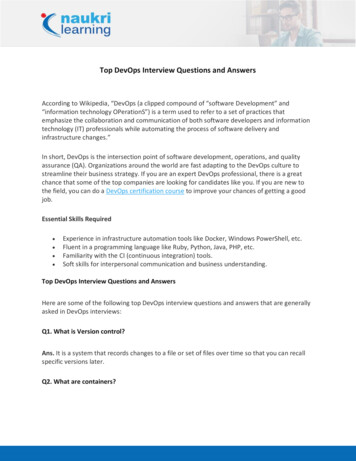
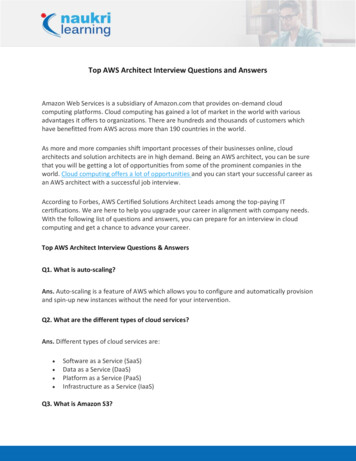
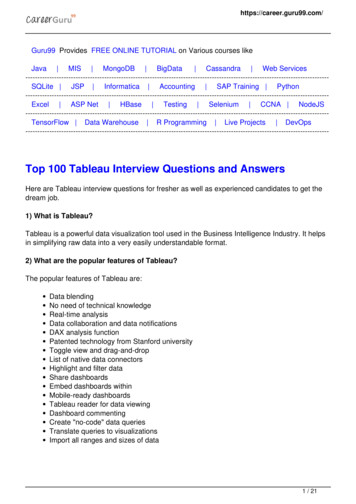
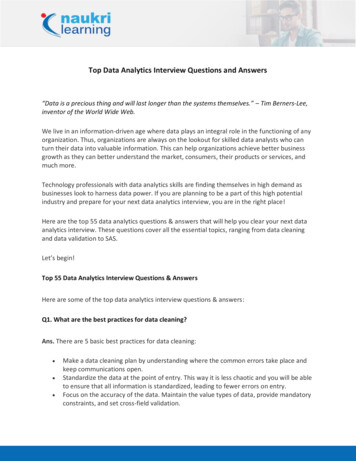
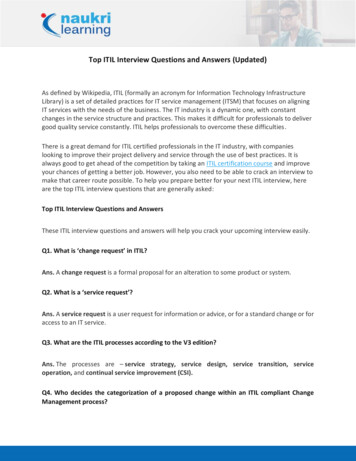
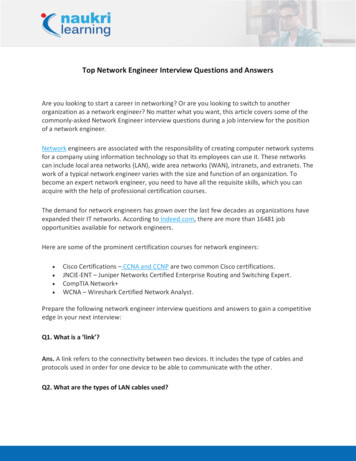
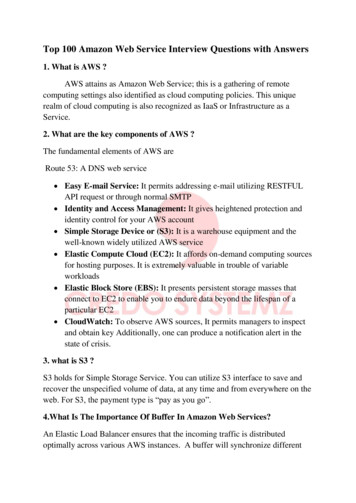
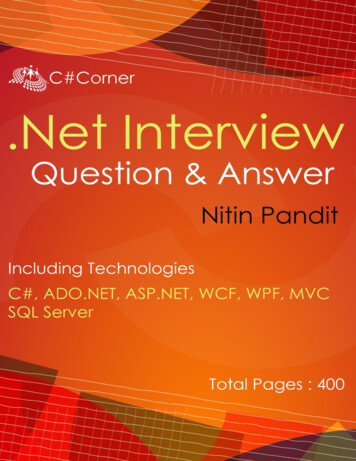
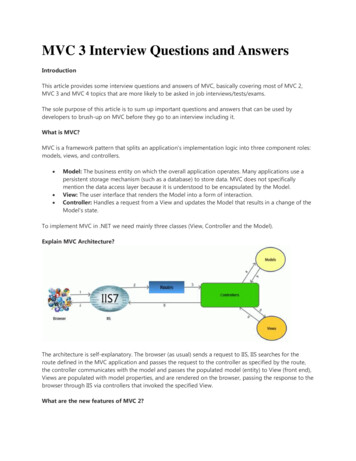
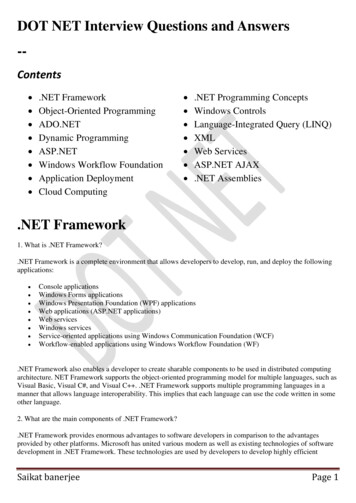
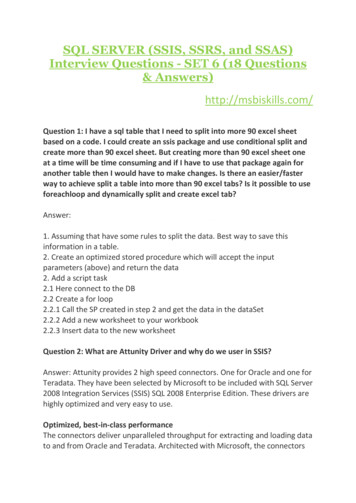
![Informatica Interview Questions and Answers [Scenario-Based]](/img/2/informatica-interview-questions-and-answers-scenario-based-1.jpg)